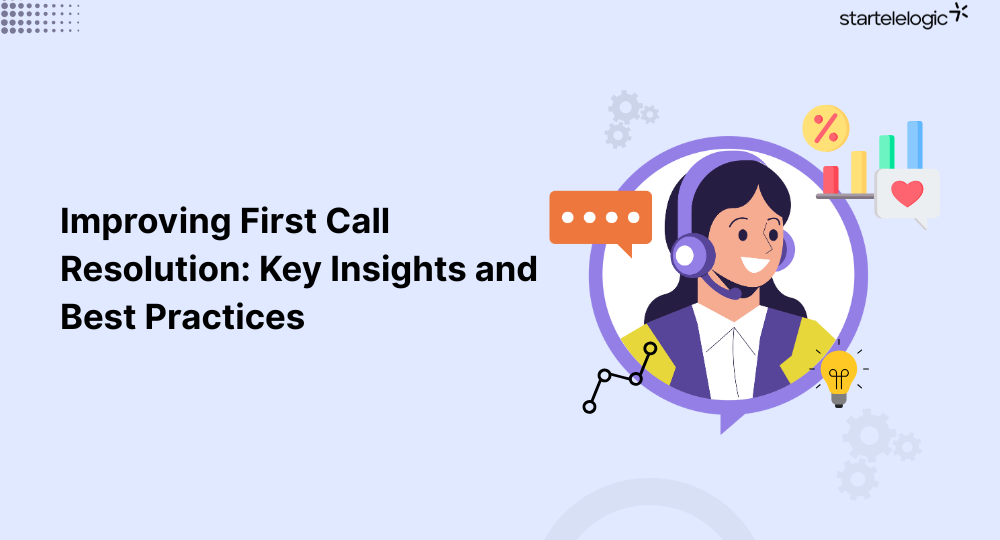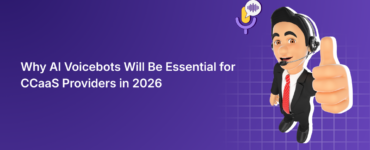When you call a company for help, you expect a quick solution — not a chain of follow-up calls or long waits. That’s where First Call Resolution (FCR) comes in. It simply means solving a customer’s problem during the very first interaction.
And it’s more than just good service — it’s smart business. Research shows that companies with high FCR rates see up to 30% higher customer satisfaction and 40% fewer repeat calls. In short, getting it right the first time keeps customers happy and support teams more efficient.
In this guide, you’ll learn what FCR really means, why it’s so important, and how you can improve it through practical tips and proven strategies.
What is First Call Resolution?
First Call Resolution measures your support team’s ability to solve customer problems on the first attempt — no callbacks, no emails, no second attempts.
If a customer needs to contact you again for the same issue, that’s not counted as resolved. And today’s customers expect things to be resolved quickly. They want clear answers, fast solutions, and minimal effort on their part.
A high FCR rate shows that your call center is skilled, well-equipped, and efficient. A low rate usually means there are bigger problems — like slow systems, poor agent training, or a lack of internal coordination. Fixing those issues directly improves both customer experience and team performance.
Why First Call Resolution Matters
FCR isn’t just another metric — it’s a reflection of how well your support team serves your customers.
When agents resolve issues the first time, customers feel valued and respected. They don’t need to repeat their story or chase a solution, which builds long-term trust in your brand.
From a team perspective, higher FCR reduces repeat contacts. That lowers the overall call volume, gives agents more breathing room, and prevents burnout. The result? Happier customers, more productive agents, and lower support costs — all signs of a healthy, high-performing call center.
What Causes Poor First Call Resolution?
If your FCR rate is low, something is holding your team back. One of the most common issues is a lack of proper information. If agents don’t have the right tools, guides, or product knowledge, they won’t be able to provide complete solutions on the first call.
Another major factor is poor call routing. When customers reach the wrong department or agent, it wastes time and increases frustration. It also raises the chance that they’ll call back again.
Sometimes the issue lies in policy. If agents can’t take action without manager approval, they can’t deliver fast resolutions. And in many cases, agents end calls without checking whether the customer feels truly satisfied — leading to missed opportunities for resolution.
Add to that broken promises — when follow-ups or fixes don’t happen — and customers naturally call again, driving FCR even lower.
Best Practices to Improve First Call Resolution
The first step to better FCR is training agents to ask the right questions. Often, customers describe the problem’s surface, not the root cause. Agents need to dig deeper with thoughtful conversation and active listening.
Building a strong internal knowledge base is also key. Agents should be able to access up-to-date information quickly during calls. This helps them feel confident and reduces delays.
It’s also important to shift your focus from speed to quality. A quick call that leads to a callback doesn’t help. Encourage agents to take the time they need to solve issues properly — even if it means spending a few more minutes on the line.
Empower your team to make decisions. When agents can offer a refund, escalate an issue, or make exceptions without waiting for approval, they resolve problems faster and better.
Finally, invest in ongoing coaching. Review real calls with your team, give feedback, and help agents improve both technical knowledge and communication skills. Small improvements here can have a huge impact on your FCR.
FCR Improvement Strategies That Deliver Results
To truly raise FCR, look beyond the agent. Smart call routing can make a big difference. When customers speak with the right person the first time, their problem is far more likely to get solved.
Use CRM integration to give agents a full view of each customer’s history. That way, they don’t need to ask repetitive questions, and they can tailor solutions more effectively.
Offer self-service tools for common questions. A strong help center or chatbot can reduce simple queries, giving agents more time for complex issues that require human support.
Make FCR part of your performance goals across teams. Not just for agents, but for managers and leaders too. When everyone focuses on solving problems in one go, the entire service culture improves.
Also, work on cross-department collaboration. Sometimes delays come from other teams — like billing or product. When those teams work in sync with support, you eliminate gaps that often lead to repeat calls.
Final Thoughts
First Call Resolution is more than just a support metric — it’s a sign of true service quality. Solving customer problems quickly, completely, and confidently makes a lasting impression.
By focusing on smart systems, empowered agents, and continuous improvement, your team can increase FCR and deliver a smoother, more reliable customer experience.
Remember, it’s not about doing more. It’s about doing it right — the first time.
Frequently Asked Questions About First Call Resolution
1. What is First Call Resolution in a call center?
First Call Resolution (FCR) refers to the ability of a call center to resolve a customer’s issue during their first contact, without requiring a follow-up call or interaction. It’s a key metric that measures how efficiently and effectively support teams handle customer concerns.
2. Why is First Call Resolution important for customer satisfaction?
First Call Resolution directly affects customer satisfaction because it shows the company values the customer’s time. When problems get solved on the first call, customers feel heard, respected, and are more likely to trust the brand and remain loyal.
3. How can I improve First Call Resolution in my support team?
To improve First Call Resolution, focus on training your agents thoroughly, providing them with easy access to knowledge bases, and empowering them to make decisions. Also, invest in smart call routing and encourage active listening during calls.
4. How is First Call Resolution measured?
You can measure First Call Resolution by tracking whether a customer needed to reach out again within a certain time frame for the same issue. Many call centers use CRM tools, call logs, and post-call surveys to monitor FCR accurately.
5. Does First Call Resolution impact business performance?
Yes, First Call Resolution plays a major role in business performance. It reduces call volume, lowers operational costs, improves customer retention, and enhances the overall efficiency of your support center — making it a vital contact center metric.




